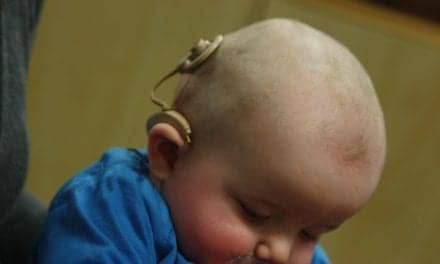Blamey Saunders Hears—an Australia-based hearing aid company—announced it has unveiled Facett, a self-fit, modular hearing aid. Led by two Melbourne scientists, Professors Peter Blamey and Elaine Saunders, Blamey Saunders Hears partnered with leading Melbourne universities, and has been assisted by the Federal and Victorian State governments, to produce what the company calls “a breakthrough in hearing technology.”
Named for its faceted appearance which was inspired by natural forms in Museums Victoria’s mineralogy collection, Facett consists of two components. The “core” represents the brains and contains the user’s settings, and the “module,” which contains a rechargeable battery that activates the hearing aid. Users can disconnect and connect the module with a simple click.
Blamey Saunders Hears IHearYou system is designed so that a visit to the audiologist is not necessary. According to the company, individuals can optimize their settings for their listening preferences on a smartphone, tablet, or Windows computer at home.
“Blamey Saunders Hears is on a mission to help Australians hear better at an affordable price,” said Saunders, co-founder of Blamey Saunders Hears. “Facett is the culmination of decades of work, and the many scientific advances we’ve made in hearing. Facett is a true collaboration between science and design. It’s part of a digital health system that empowers people to self-manage their hearing experience. We’re also very proud that Facett has been designed in Victoria and is manufactured in Victoria.”
A true Australian partnership
With the aid of the Federal Government’s Accelerating Commercialisation grant, a team led by Blamey and Saunders has addressed hearing health barriers with Facett.
This unique collaboration between Blamey Saunders Hears, Extel Technologies, RMIT University, and Swinburne University brings hearing aid design and manufacture to Victoria.
Designer Leah Heiss found her inspiration among Museums Victoria’s mineralogy collection, and has worked to remove the perceived stigma of conventional hearing aids. Heiss said, “This is about design to improve life. Facett is beautiful and I hope the user will be proud to wear it.”
About Facett:
• Facett is a hearing aid that is designed to be self-fit, modular, and “easy-to-use,” according to the company. The “core” contains the sound processing chip and user settings. The module contains a rechargeable battery that is designed to last all day on a single charge, and can be connected and disconnected from the core.
• Facett works with a range of Blamey Saunders Hears’ telehealth tools that help to reduce the cost and service accessibility barriers to better hearing health.
• Facett aligns with Australia’s Digital Health Strategy to “put the consumer at the center of their health care and provide choice, control, and transparency.”
• Customers can access future Facett features without buying a brand-new hearing aid; optional features will be released in new, interchangeable modules that can be used with the existing core.
• Blamey Saunders Hears uses teleaudiology so that anyone living anywhere from the city to rural Australia can access Facett and receive programming support. It is designed so users can connect with an expert remotely, so there’s no need to schedule or travel for an audiology appointment. People can also access Facett from a clinic and receive clinician advice and testing.
Assistance from the Victorian State Government
Blamey Saunders Hears received a Small Technologies voucher in 2012 from the Victorian State Government. This voucher allowed the company to prototype the concept of a modular hearing aid connector at the Advanced Manufacturing Precinct at RMIT University. The outcome was not a functional design. Without this grant, the prototype stage would not have gone ahead. It highlighted the technical challenges to be overcome.
Assistance from the Federal Government
Blamey Saunders Hears was awarded funding under the Commonwealth Government’s Accelerating Commercialisation Grant (AC, AusIndustry) in 2016 for the further development and commercialization of the Modular Hearing Aid (Facett). This grant was matched by the company, but without this grant the project would not have proceeded.
Other partners
Blamey Saunders Hears identified Extel Technologies as the most appropriate manufacturing partner for the project. The company partnered with the ARC Training Centre for Biomedical Devices at Swinburne University, and PhD student Jonathon Miegel helped solve the remaining technological challenges in the hearing aid’s modular connection, accessing the resources of Swinburne University’s Factory of the Future.
Source: Blamey Saunders Hears
Images: Blamey Saunders Hears, Heather Lighton









I have just commenced hearing assessment and would appreciate further information on Facet. Thank you.
Hi Richard,
Thanks for your interest in Facett. YOu can learn more about it here: https://www.facett.com.au/
Facett is available for order online (https://www.blameysaunders.com.au/hearing-aids/facett-hearing-aid) or in clinic, and you receive ongoing after-purchase support from our Melbourne-based Customer Service team.